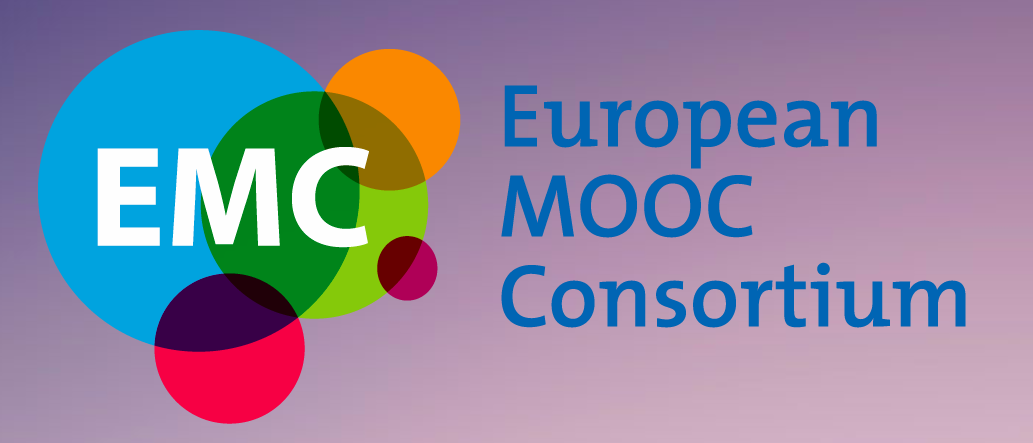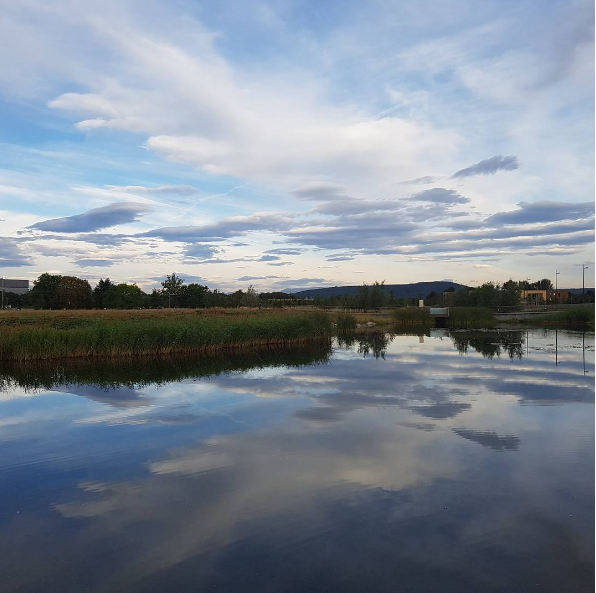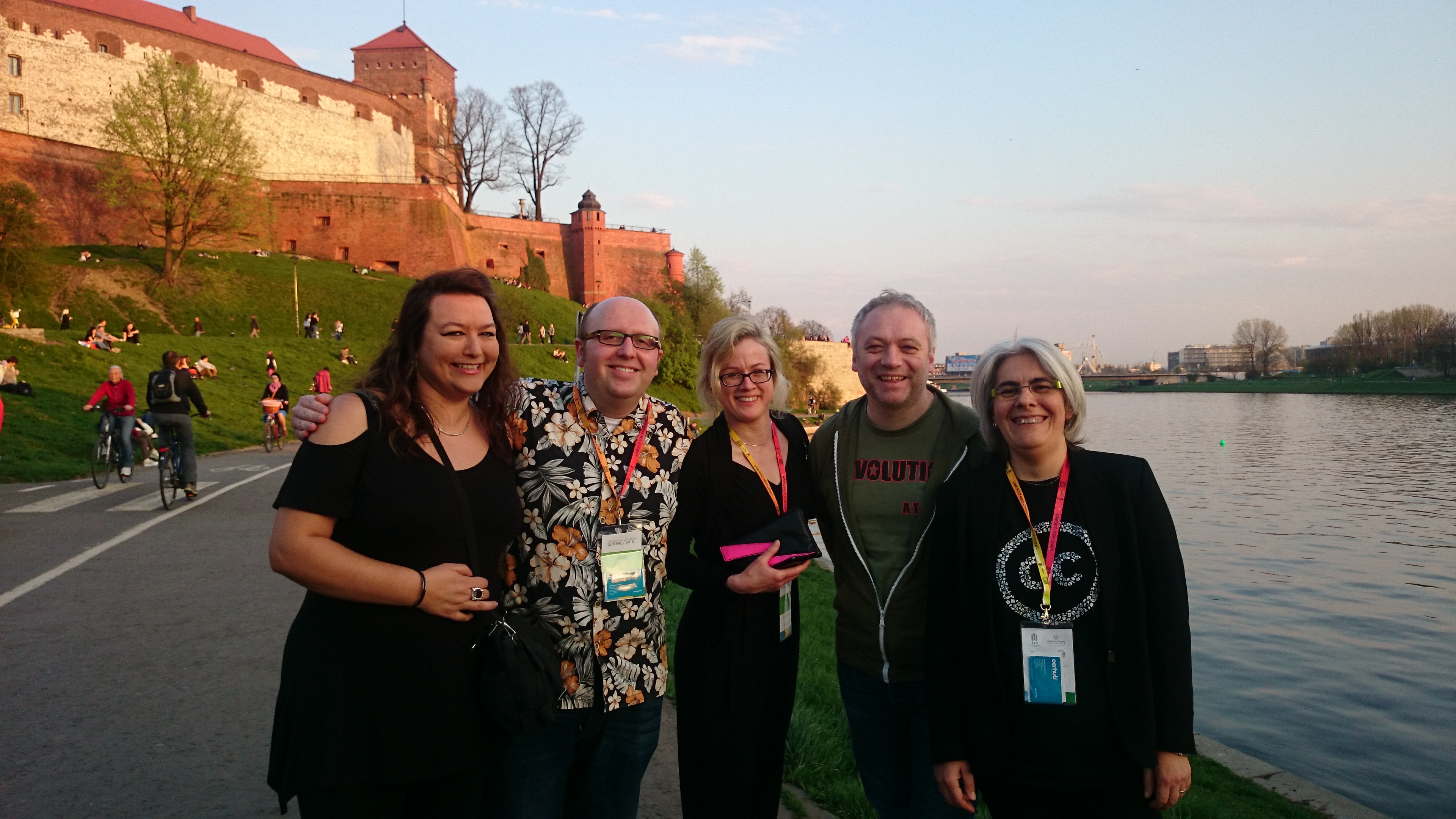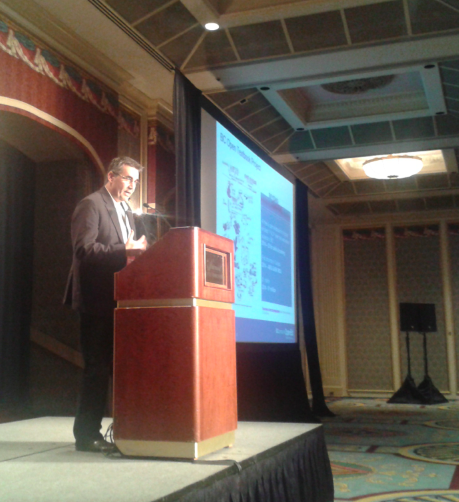
What’s happening inside the world’s largest OER project? What patterns exist among grantee projects in their use and attitudes of OER and proprietary content?
This blog post summarizes initial results of a survey conducted in February and March of 2014, exploring knowledge areas and use patterns of Open Educational Resources (OER) and proprietary educational content among grantees of the U.S. Department of Labor Trade Adjustment Assistance for Community College and Career Training (TAACCCT) grant program. The TAACCCT program is a four-round US$2bn program, with 183 grants issued in the first three rounds, representing workforce readiness and career training programs across all 50 states and Puerto Rico. Central to Creative Commons’ (CC) involvement in this project, the TAACCCT program has mandated that all deliverables be licensed with the Creative Commons Attribution 3.0 unported (CC BY 3.0) license, allowing for the extension, reuse, adaptation, remixing, and sharing of content developed with TAACCCT funding, and is an integral piece of legal and technical infrastructure supporting OER development.
Generously funded by the Bill and Melinda Gates Foundation, CC works as part of the OPEN consortium alongside experts in courseware design, OER management, Universal Design for Learning (UDL), and learning science at the Open Learning Initiative (OLI), CAST, and Washington State Board for Community and Technical College (SBCTC) to support effective, accessible, openly licensed courseware design among grantees. Towards that mission, this survey was conducted to establish baseline knowledge and perceptions of OER among grantees that we hope will also add to our understanding around large-scale collaborative OER projects such as TAACCCT.
Key findings
Time involved in the TAACCCT project has raised project teams’ awareness of OER, of open licensing as a key component of OER, and of the CC BY license mandate associated with their grant. Overall awareness of OER remains relatively high among the cohorts of funding rounds 1 and 2, particularly in respect of the importance of open copyright licenses in the construction of OER. This may indicate a shift in the conversation around OER, towards a better common understanding of “free” versus “open.” Data also suggests that locating OER relevant to their course development remains difficult, though for the overwhelming majority of project team members this is a first experience participating in the construction of OER.
Introduction
Four (4) primary themes of survey:
- Awareness of OER
- Experience with OER
- Perceptions of OER*
- Use and perceptions of proprietary content*
This blog post is part 1 in a series, and will cover results from the first half of the survey (see below). As my work with researchers at the OER Research Hub (OERRH) continues, we will share results from the second half of the survey, and begin to map survey data to the other evidence being collected by the OERRH.
*These sections will be covered in part 2 of the series
Figure 1. Sample of responses, by funding round
Table 1. Sample of responses, by funding round
| Funding round | Round 1 | Round 2 | Round 3 | Rounds 1,2 | Rounds 1,3 |
| Sample (n) | 19 (42.2%) | 24 (53.3%) | 2 (4.4%) | 2 (4.4%) | 1 (2.2%) |
key
| Size: (not an indicator) Clustering: Funding round |
The sample (N=45) was derived from 51 responses to the survey, from which duplicate responses from individuals, colleges, and consortia were removed. The survey targeted recipient colleges and consortia of Round 1 (n=16) and Round 2 (n=24) TAACCCT grants, though some participants represented multiple projects (n=4), or represented a single Round 3 (n=2) grant. A small number of responses (n=3) represented projects operating under funding received during multiple rounds of TAACCCT. Responding parties were in leadership or project-directing roles within their consortia at the time of the survey. The figures we’ve collected represent responses made on behalf of project teams, and are meant to describe the general sentiment of each project team, but cannot easily represent the experiences and attitudes of all project members.
1. Awareness of OER
- of Open Educational Resources (OER)
- of open copyright licenses as a key component of OER
- of the CC BY requirement for TAACCCT
Figure 2: Awareness levels of OER, by funding round
Color reference:
| Funding round | Round 1 | Round 2 | Round 3 | Rounds 1,2 | Rounds 1,3 |
| Scale | Size |
|
 |
This portion of the survey attempted to gauge grantee awareness of OER, of open licensing of content as a key component of OER, and of the CC BY open licensing requirement for TAACCCT. Figure 2 (above) displays individual responses grouped by funding round and size determining the team’s awareness of OER. More than half (51.1%) of the responses indicated that all or nearly all of their team was aware of OER (n=23). An additional third (33.3%) of responses indicated that fifty or seventy-five percent of their teams were aware of OER (n=15). Responses indicating the lower awareness levels (none to few or about twenty-five percent) represented 15.6% (n=7) of the sample.
When considering the licensing-specific aspect of OER, one-third (33.3%) of responses indicated that all or nearly all of the team was aware of open licensing as a key component of OER (n=15). The four subgroups indicating lower team awareness were distributed at 20.0% (n=9) for seventy-five percent awareness, 17.8% (n=8) for half team awareness (n=8), 15.6% (n=7) for twenty-five percent team awareness (n=7), and 13.3% (n=6) for little to no awareness of this aspect of OER. This topic marks the lowest awareness level of the three in this section, mentioned further below.
No responses indicated that all or nearly all members of the project team were aware of the CC BY requirement for TAACCCT, while 26.7% of responses indicated that either half or seventy-five percent of the team were aware of the licensing requirement (n=12). Reports of lower awareness (none or twenty-five percent of the team) totaled 73.3% of responses (n=33). We can also look at these results about awareness of OER while considering responses that indicated more than half (50.0%) or more of their team’s members were aware of the three OER-related topics. If the current dynamic was such that one half of every content-developing team at colleges and universities today were aware of OER, the dynamic between OERs and proprietary content would certainly be different.
Table 2. Portions of team indicating half (50%) or more awareness of OER topics
| Awareness of | Team awareness half (50%) or more (n) |
| OER | 85.4% (n=38) |
| Open licensing as critical to OER | 71.1% (n=12) |
| CC BY licensing requirement for TAACCCT | 26.7% (n=32) |
The above percentages (Table 2) represent the teams who have fifty percent or more awareness of OER, open licensing, etc among project team members. With some TAACCCT grantee consortia representing as many as 20 or more colleges and universities, and dozens of project team members spread out among those campuses, the landscape of community and technical training institutions is distributing expertise in openness across the nation.
The figure below represents survey responses reporting awareness to all three of the topics, one on each vertical axis. The axes are broken up into responses groups, with a smaller number (0.5, 1) indicated lower team awareness, and higher numbers (3, 4) indicating more team awareness. Awareness level indicators are noted to the left of the graph, and range from 0.5 (none or few team members) to 4 (all or nearly all team members). The axes have also been ordered from left to right, from general OER awareness to more specific open licensing topics, which provides a look at the commonalities among project teams.
Figure 3. Levels of OER awareness across topics
Vertical axes:
|
| Segment size on axis: Size of grouping (n) |
These data also show lower overall awareness of open licensing being a critical component of OER than of OER itself, and even less indicated awareness of the CC BY requirement for TAACCCT. The graph above displays the flow of response groups to the ‘awareness of OER’ survey questions, tracked across the three OER questions. Column 1 indicates the high (“4”= nearly 100% of team) general awareness of OER, which then flows to that same response group’s next responses: awareness of open licensing as a critical component of OER. Viewed this way, it’s easy to see how team awareness drops off, or in some cases increases, by following a group between the columns of responses. The next largest group in the left-hand column (“3”= about 75% of team) group can be seen being divided when flowing to their responses about open licensing as being critical to OER. Notice the column far-right holds no responses reaching into the “4” (nearly 100% of team) category regarding the open licensing requirement for TAACCCT, and shows the most frequent group response to be “1,” or only about 25% of the team. Even when reporting fairly high awareness of OER and open licensing for OER, awareness of the CC BY requirement for TAACCCT grant projects was fairly low.
In the broader education community outside of the TAACCCT program, “free to view online” is often conflated with “open,” though the open licensing component is essential to OER as an unlocking and multiplying agent for content. The low indicated awareness of the open licensing component of the TAACCCT program is not entirely surprising, as survey data also indicate very low portions of grantees had authored OER content prior to TAACCCT. One can argue that copyright concerns for creators/authors of work are different, and pure end-users are less likely to have dealt with copyright licenses unless they had also previously released content (OER or otherwise) themselves. Supporting grantees in their both being aware of open licensing, and properly marking their materials is a key component of the service OPEN offers, and this data shows that there is still much work to be done informing grantee project teams about OER.
We can compare these numbers about awareness of OER longitudinally with similar data from a survey we delivered to Round 1 grantees at the beginning of their projects 22 months prior (April/May 2012):
Table 3. Round 1 grantee awareness of OER 2013 vs 2014
| Awareness of OER (portion of team) | Spring 2013 (N=27) | Spring 2014 (N=22) |
| Few or none | 11.1% (n=3) | 4.5% (n=1) |
| About 25% of team | 33.3% (n=9) | 13.6% (n=3) |
| About half of the team | 13.6% (n=8) | 13.6% (n=3) |
| About 75% of team | 15.8% (n=4) | 9.1% (n=2) |
| All or nearly all | 11.1% (n=3) | 59.1% (n=13) |
Looking at these earlier numbers, Round 1 grantee awareness of OER has increased, with 59.1% (n=13) groups reporting that all or nearly all team members are aware. Comparing these results with only 11.1% (n=3) reporting this level of awareness in the first survey, leads us to believe that basic awareness of OER has increased significantly during involvement in TAACCCT.
2. Experience with OER
- Portion of team having authored OER prior to TAACCCT
- Team’s experience finding relevant OER for course development
- Portion of OER used in project to date
Figure 4. Previous experience authoring OER
| Size: Portion of sample |
Table 4. Previous experience authoring OER
| Portion of team | Few or none | about 25% | about 50% | about 75% | all or nearly all |
| Sample (n) | 39 (88.6%) | 3 (6.8%) | 1 (2.3%) | 0 (0.0%) | 1 (2.3%) |
The following section summarizes grantee experiences interacting with OER, specifically in locating useful OER for TAACCCT curriculum development and releasing OER they have authored. Figure 4 and Table 4, above, show that of the responses, 88.6% (n=39) indicated that none or few of the project team had released OER prior to involvement in TAACCCT. Three groups (6.8%, n=3) indicated that twenty-five percent of the team had previously released OER, while one response was recorded for “about half” (n=1) and “nearly all” (n=1) of the team, each. For the overwhelming majority of project team members, being a part of TAACCCT is their first experience having a hand in authoring OER.
Figure 5. Team experience locating OER
| Clustering: Experience level Color reference: |
| Funding round | Round 1 | Round 2 | Round 3 | Rounds 1,2 | Rounds 1,3 |
| Scale | Size |
|
 |
The largest group of responses (40.5%) indicated that their team’s experience locating relevant OER for TAACCCT course development was “moderate” (n=17), mid-way between being very easy and being very difficult. In the chart above (Figure 5), responses are grouped by the teams’ indicated experiences locating OER relevant to their TAACCCT course development, and colored-coded by funding round. More than one third (35.2%) reported a somewhat or very difficult experience locating relevant OER (n=19), while the remaining responses (14.3%) indicated a somewhat easy or very easy experience in the process (n=6). These data show that grantee experiences locating relevant OER for their programs appear to be sub-optimal, though a small portion of grantees are finding more success than others.
Discussion
In the next blog post, I will go over data from the remaining two sections (perceptions of OER and use/perceptions of proprietary content), and begin to look more closely at grantee projects that have higher levels of awareness of OER, or are finding more success locating and using OER. Until then, here are high-level findings pulled out from the first two sections of the survey.
Awareness of OER
- Round 1 grantees involved in TAACCCT have greater awareness in general of OER and of open licensing as a key component of OER than their Round 2 counterparts
- Round 1 grantees have more awareness of OER at this stage in their project than at the beginning of their involvement in TAACCCT
- The data suggests that groups are often aware of two of the survey topics relating to OER, but not to three
Experience with OER
- For the vast majority of grantees, this is their first experience as part of a team authoring OER content
- Locating useful OER for program and course development is still difficult for many grantees
These findings will be useful as more data are collected and the third wave of the TAACCCT project begins, and with OER materials from Round 1 projects beginning to come available in the DOL-designated OER repository. Stay tuned for part 2 of this series as we look at more details in the data behind the TAACCCT OER community.
Graph icon in header image designed by Piotrek Chuchla from the Noun Project












Reblogged this on Billy Meinke.